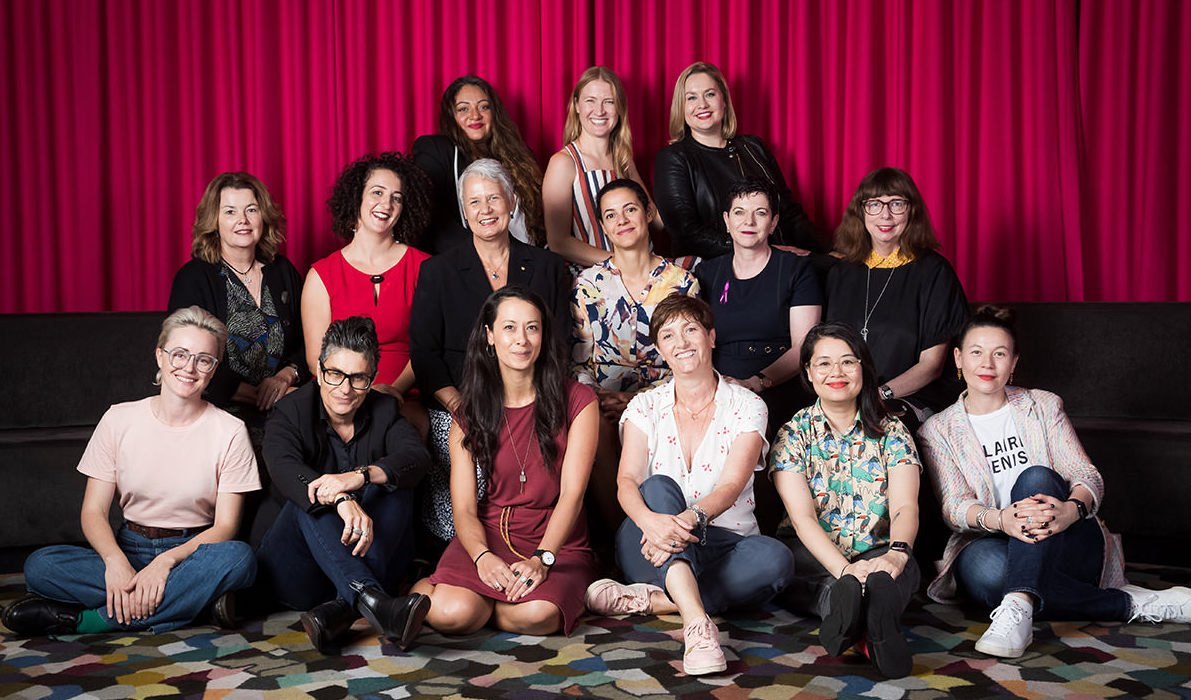Earlier this month, a ‘Gender Matters’ panel presented in Melbourne as part of the Melbourne International Film Festival’s MIFF Industry strand. It captured the journey of Screen Australia’s Gender Matters Taskforce from the announcement of the initiative through to what matters to the industry today. Chaired by content creator and actor Rosie Lourde, the panelists were Screen Australia Head of Development Louise Gough, producer Sally Caplan, writer-director Corrie Chen, and myself, as RMIT’s Dean of Media and Communication.
Gender Matters: before and now
The Gender Matters $5 million five-point plan, taskforce and KPI were announced in December 2015. The purpose was to ‘address the underutilisation of female talent in key creative roles in the Australian screen industry’. In the coming months, information will be released on that KPI, which to date has been exceeded. The aim is that at least 50% of the key creative roles across all formats (feature drama, television drama, online drama and documentary) that receive Screen Australia development and production funding will be held by women, across a three-year-average (rather than any single round).
The Taskforce is an independent advisory body to Screen Australia, embedded in industry. It has a broad role and determines a slate of initiatives. It is considering schemes for Heads of Department and below-the-line creatives. New initiatives include Screen Australia’s Credit Maker Program, which includes directors, cinematographers and composers, and offers a career-defining credit on a scripted production.
Read: Screen Australia launches HoD initiative for female practitioners
The intent is to create opportunities for women, guide equitable funding, and influence more diverse content creation. During 2022, the Taskforce is considering research into gender programs in countries outside Australia, and reflecting on options for action as the agency develops a new KPI, explores resourcing, engages with partners, and develops initiatives.
Is a taskforce still necessary?
There is greater visibility of gender issues, spurred on by the wider milieu and movements such as #Metoo. Today, all Australian screen agencies are seeking to support inclusion and diversity. This is not merely to support equity, or the human right to communicate, but because it is good business.
While the Taskforce is definitely making a positive impact, the whole of the industry must also embrace the agenda for gender equality in order for real change to occur with the systemic issues that continue to be barriers for women. It is only then that the Australian screen sector will be embracing all of its creative talent, which is required to achieve a distinctive content industry. Inclusion is well known to create innovation, so it makes economic sense.
Read: Sexism in Australian film tackled by trailblazing female panel
So far, Gender Matters has made possible a slate of brilliant stories, including female-driven stories and teams, and supported careers among other achievements. There have also been ‘soft’ results, with women feeling more supported and putting in more applications; changes to behaviour, with more men seeking out women to work with; and an overall increase in gender sensitivity in Screen Australia itself.
But change is slow and achieving it is going to take more than one program. After all, the Australian Film Commission (now Screen Australia) set up the first Women’s Film Fund in 1976, and data has shown that female participation has not substantially increased despite this history. Women are slowly gaining traction today, but the only above-the-line roles in which they are achieving parity are producers of: TV drama, online documentary, and documentary.
It is a question of leadership, and industry leaders can make a difference if they step up.
A wider lens
This month’s Gender Matters panel referred to the most recent report released by the Australian Cinematographers Society (ACS), in July 2022: A Wider Lens: Australian Camera Workforce Development and Diversity (led by Amanda Coles at Deakin University).
While one does not need a report to know that cinematography has been a male bastion, research provides a base of evidence needed for action. It points to where to act.
It revealed a diversity deficit in camera-related fields, where there are no First Nations women, and only 2% of people are trans/gender or non-binary. It found that inclusive growth was not encouraged; the workforce is whiter, older and more male-dominated than the general workforce population, and men get the more prestigious senior roles. Harassment and bullying of women came up in the survey, but those experiencing it were afraid of consequences if they reported it to employers.
A key area of gender discrimination in the ACS survey was money. Women aren’t working on larger budget productions and the greater the budget, the fewer females are participating. It also found a serious gender pay gap. This was not explained by experience or qualifications, but one of the reasons was that women undersold themselves and often asked for lower fees.
On the upside, there have been significant increases since 2019 in camera departments but women are still less frequently landing Director of Photography (DOP) roles.
How can industry be part of the change?
Leadership is critical, as well as allyship: everyone committing to gender equality and sensitivity. What our industry leaders do, say and prioritise makes a difference.
Every company or organisation can develop strategies for gender sensitivity, for interrogating the diversity of any team or assessment panel, and act to change or challenge discriminatory or biased behaviour.
In rectifying systemic issues, new ways of working are required, and new ideas such as job-sharing for people with caring commitments. If there was pay transparency, such as standardised rates (e.g. in the case of cinematographers), then women and newcomers would be in a more sustainable position. Women already possess the talent and skills required, so they don’t need to be ‘fixed’ or need training, because they already do more of that than men, but fairer, more inclusive workplaces must be built – that should be the key priority.
The ACS report and other research will help to understand where and how to take action. The Taskforce is currently doing this in creating a plan.
Communicating the value of inclusion for the future of the industry requires recognition of the value of engaging all our talent (and stories), and understanding diversity as essential to innovation, and thus success. This underpins the current calls for submissions to the National Cultural Policy consultation, which are framed around nurturing diverse stories of all Australians as creators of culture.
During the panel on Gender Matters at MIFF, Screen Australia’s Head of Development Louise Gough suggested that Australians should be more aware of the international context. Global players are looking to see the ‘next wave’ from Australia – these have to date been visible in productions from Indigenous filmmakers, and going back to the 1990s and the so-called glitter cycle (Muriel’s Wedding, The Adventures of Priscilla, Queen of the Desert, and Strictly Ballroom); or before that, gothic films of the 1970s.
Let’s hope that the next-one is a female driven wave. After all, the support our industry has given to women is now internationally famed.
Lisa French is Dean of The School of Media and Communication at RMIT University and Professor of Screen and Media. She has track record as an educator, a festival director, occasional filmmaker, and writes on film, television, and the arts.





